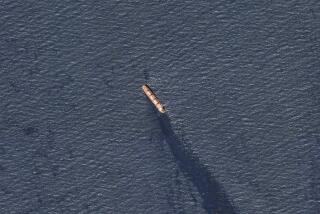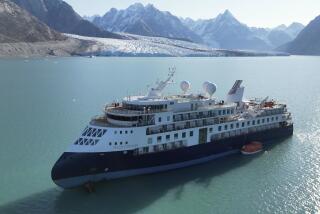Sunken cruise ship threatens penguins
- Share via
SANTIAGO, CHILE — About 2,500 penguins en route to their Antarctic mating grounds could be sickened by a diesel fuel spill from a cruise boat that struck ice and sank last month, Chilean scientists say.
Areas surrounding the mile-long spill site include breeding grounds for Antarctic and Adelia penguins, and the largest mating colony for Papua penguins, said Maria Jose Rosello, a Chilean marine biologist.
“The danger is that this fuel spill will impede the journey that species like Papua penguins make at this time of year,” Rosello said.
Veronica Vallejos, director of the scientific department at the Chilean Antarctic Institute, said the spill could also affect other Antarctic fauna, including sea lions, seals and sea birds as well as fish, krill, algae and plankton colonies -- key elements of the region’s food chain.
“There’s always environmental danger when fuel leaks, and even more so in a zone with high biodiversity,” Vallejos said.
The Explorer, an adventure travel ship on a 19-day cruise off Antarctica, hit ice Nov. 23 while plowing through a floe, forcing its 154 passengers and crew into lifeboats in the middle of the night.
They waited for about six hours until they were rescued by a Norwegian cruise ship.
The Explorer had about 50,000 gallons of diesel, 6,300 gallons of lubricant and 260 gallons of gasoline when it sank.
Chile’s navy says that bad weather has kept cleanup crews from containing the spill, which is for now penned in by large chunks of floating ice in the Bransfield Strait, about 50 miles east of King George Island.
“The diesel oil continues flowing” from the ship, which now rests 4,800 feet below the surface, Vallejos told Cooperativa radio.
Vallejos and other Chilean experts who toured the spill site reported seeing no contaminated birds last week, but noted they hadn’t been able to fully assess the damage the diesel might have done.
Studies by scientists who regularly conduct research in Antarctica at this time of year will be key to establishing the extent of the damage, she said.
More to Read
Sign up for Essential California
The most important California stories and recommendations in your inbox every morning.
You may occasionally receive promotional content from the Los Angeles Times.












